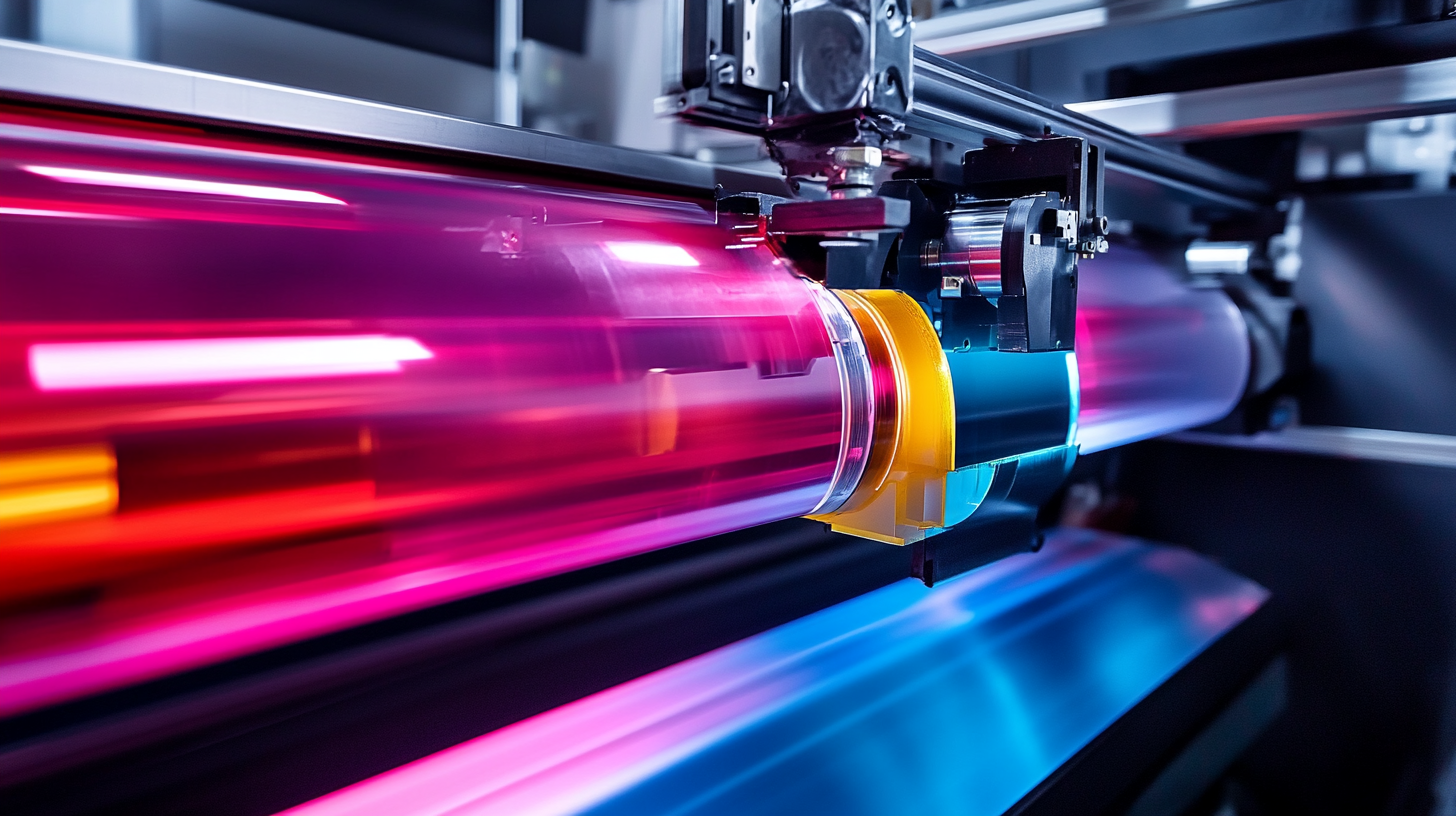
In the rapidly evolving landscape of optics manufacturing, selecting the right Optical Film Coating Machine is crucial for achieving optimal product quality and operational efficiency. According to a recent market report by Research and Markets, the global optical coatings market is projected to reach $13 billion by 2025, driven by the increasing demand for advanced optical components across various industries, including telecommunications, aerospace, and consumer electronics. However, the choice of an appropriate coating machine can be daunting, given the diverse types available and their specific applications.

In this blog, we will delve into common problems associated with different types of Optical Film Coating Machines, helping you navigate the complexities of selecting the best equipment tailored to your unique production needs. Through this guide, you will gain insights into not only the technical specifications and performance metrics but also the potential pitfalls to avoid in your purchasing decision.
When selecting an optical film coating machine, understanding the key factors that influence your decision is crucial. The global optical coating market was valued at approximately $11.8 billion in 2020 and is projected to grow at a compound annual growth rate (CAGR) of 7.41% from 2021 to 2030. This growth highlights the increasing demand for advanced optical coatings across various industries, making it imperative for businesses to invest in the right coating technology tailored to their specific needs.
One of the primary considerations is the type of substrates and coatings being used. Recent studies have shown that materials like acrylic styrene latex combined with nanoclay can significantly enhance performance when applied at different loading levels. Additionally, the choice of additives such as calcium carbonate, which can be modified across multiple loading levels, plays a vital role in the overall effectiveness of the film. By carefully evaluating these factors, manufacturers can ensure that they select an optical film coating machine that delivers both efficiency and quality, ultimately boosting their competitive edge in the expanding market.
When selecting an optical film coating machine, it’s crucial to understand the various technologies available in the market. The most prominent types include vacuum coating, sputtering, and chemical vapor deposition (CVD) technologies. According to a report by Grand View Research, the global optical coating market, valued at approximately $10 billion in 2022, is projected to grow at a CAGR of 5.8% from 2023 to 2030, highlighting the increasing demand for high-performance optical films across several industries.
Vacuum coating techniques, such as thermal evaporation and magnetron sputtering, offer precision and durability, making them ideal for producing coatings that enhance the optical properties of substrates. The data indicates that sputtering is especially favored in industries requiring robust and scratch-resistant coatings, with a market share increasing significantly in the last few years. Meanwhile, CVD technology is known for its ability to create uniform thin films, contributing to advancements in high-tech applications, including semiconductor and aerospace sectors.
Furthermore, the choice of technology often influences the cost-effectiveness and scalability of production. Reports suggest that companies focusing on advanced manufacturing processes, like roll-to-roll coating, are gaining a competitive edge by minimizing waste and increasing throughput. As you evaluate your specific needs, understanding these technologies will be key to selecting the right optical film coating machine for your applications.
| Coating Technology | Film Thickness Range (nm) | Typical Applications | Advantages | Disadvantages |
|---|---|---|---|---|
| Physical Vapor Deposition (PVD) | 10 - 2000 | Optical lenses, mirrors | High precision, durable coatings | Higher initial cost, slower deposition rates |
| Chemical Vapor Deposition (CVD) | 50 - 3000 | Semiconductors, optical components | Uniform coating, versatile | Complex setup, potential safety hazards |
| Sputtering | 5 - 1000 | Displays, solar panels | Thick coatings, materials flexibility | Lower deposition rates than PVD |
| Spin Coating | 50 - 1000 | Photoresists, optical films | Simple process, uniform thickness | Limited to flat surfaces |
| Dip Coating | 100 - 5000 | Glass, ceramics | Cost-effective for large items | Thicker coatings can be uneven |
When selecting an optical film coating machine, performance metrics are crucial in ensuring that you achieve superior results. Speed is often the first consideration; it determines how swiftly you can coat a given substrate. A machine that offers faster coating times can significantly enhance productivity, allowing for increased throughput without compromising on quality. However, it's vital to evaluate speed in conjunction with the machine's capability to maintain uniformity during high-speed operations, as inconsistency can lead to defects in the final product.
Precision is another essential metric when assessing an optical film coating machine. The ability to apply coatings with the utmost accuracy is vital for optical applications where even the slightest deviation can impact performance. Machines with advanced control systems often allow for fine-tuning of parameters, ensuring that coatings are applied uniformly across various surfaces. This level of precision not only caters to the specific requirements of different optical films but also minimizes waste, making your production process more efficient.
Lastly, efficiency encompasses the overall operational capabilities of the machine, including energy consumption and maintenance requirements. Machines designed with energy efficiency in mind not only reduce operating costs but also contribute to a more sustainable manufacturing process. It's important to consider longevity and the availability of spare parts, as these factors can influence overall efficiency in the long term. Therefore, when choosing the best optical film coating machine, a careful assessment of speed, precision, and efficiency will ultimately guide you toward the right investment for your production needs.
When considering an optical film coating machine, understanding the balance between cost and value is crucial for effective budgeting. Industry reports indicate that high-quality machines can range from $10,000 to over $100,000, depending on the features and capabilities. For instance, a machine capable of efficiently coating complex shapes may initially seem expensive but could significantly reduce labor costs and material waste over time, thus proving its value.
Moreover, evaluating the technology used in these machines is essential. Optics professionals often recommend investing in state-of-the-art systems that utilize advanced automation and precision control. According to market analysis, companies that upgraded to such systems reported production efficiency improvements of up to 30%, leading to substantial cost savings over their operational lifetime. As technology evolves, prioritizing machines that offer both reliability and upgradability could further enhance your investment, ensuring that you remain competitive in an industry that demands both quality and innovation.

 When investing in an optical film coating machine, understanding its maintenance and support requirements is crucial for ensuring the longevity and efficiency of your equipment. Regular maintenance not only extends the lifespan of the machine but also enhances the quality of the coatings produced. This involves routine checks on critical components, such as the vacuum system, heating elements, and coating heads. Keeping these parts in optimal condition reduces the risk of downtime, saving both time and money in the long run.
When investing in an optical film coating machine, understanding its maintenance and support requirements is crucial for ensuring the longevity and efficiency of your equipment. Regular maintenance not only extends the lifespan of the machine but also enhances the quality of the coatings produced. This involves routine checks on critical components, such as the vacuum system, heating elements, and coating heads. Keeping these parts in optimal condition reduces the risk of downtime, saving both time and money in the long run.
In addition to routine maintenance, having access to reliable support services is essential. Manufacturers that offer comprehensive warranty packages and prompt technical support can significantly ease the burden of unexpected issues. Regular training sessions for staff on proper operational procedures and troubleshooting techniques are invaluable, as they empower your team to handle minor problems without needing outside assistance. Establishing a solid relationship with your equipment supplier can ensure timely access to spare parts and expert advice when you encounter challenges. By prioritizing maintenance and support, you can maximize the performance and lifespan of your optical film coating machine, ultimately improving your production outcomes.